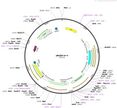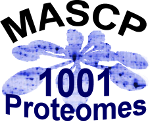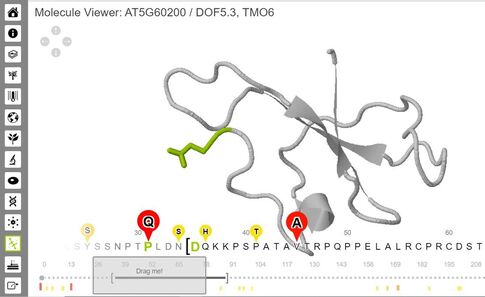Tools - CUrrent
|
Arabidopsis Glycosyltransferase (GT) Clone Collection
The Arabidopsis glycosyltransferases targeted for cloning were defined by the Carbohydrate-Active enZYmes Database (CAZy) and cross referenced against the latest genome release (AraPort 11). The collection comprises 460 loci defined as GTs by CAZy and 98 loci defined as GT not classified (GTnc). A digital copy of the current set of Arabidopsis clones (GTs and GTnc) can also be found here (xlsx file). The JBEI GT Collection has now been published in The Plant Journal: Lao et al., (2014) 79:517-29. |
|
pBullet
The pBullet vector series was developed to enable high-throughput transient localizations of plant endomembrane proteins with fluorescent markers using particle bombardment or biolistics. The vectors are available through AddGene. Details on their construction and application were published in Lao et al., (2014) Plant Journal 79:517-29. doi: 10.1111/tpj.12577 A simplified protocol has also been provided here. |
Tools - Past Collaborations
|
The SUBcellular Arabidopsis (SUBA) database
SUBA provides a powerful tool to investigate protein subcellular localization in Arabidopsis through the unification of disparate datasets including mass spectrometry and fluorescently tagged proteins. This utility was developed in 2005 with Harvey Millar at the University of Western Australia. The SUBA portal is maintained and hosted by Harvey Millar, University of Western Australia (Australia) |
|
PhosPhAt
The Arabidopsis Protein Phosphorylation Site Database (PhosPhAt 3.0) contains information about phosphorylation sites identified by mass spectrometry in the reference plant Arabidopsis. This utility was developed in 2007 in collaboration with Waltraud Schulze while at the Max Planck Institute of Molecular Plant Physiology (MPI-MP). The PhosPhAt portal is maintained and hosted by Waltraud Schulze, University of Hohenheim (Germany). |
Tools - Discontinued
|
MASCP Gator
The MASCP Gator was a proteomic aggregation portal developed in 2011 by a consortium of researchers (MASCP) that visually displayed peptide matches from a variety of online proteomic resources that focused on the reference plant Arabidopsis. Joshi et al., (2011) Plant Physiol. 155: 259-270. doi: 10.1104/pp.110.168195. The portal was retired in 2019 due to the absence of data not held in online resources. For the past decade, data from large scale proteomic surveys of Arabidopsis have raw and processed data made available through online repositories such as PRIDE or the ProteomeXchange. Harvesting data from these resources would require a compete redesign of the MASCP Gator. Fortunately, in 2019 Klaas van Wijk and Qi Sun (Cornell University) along with Eric Deutsch (Institute of Systems Biology) received support from the NSF to re-analyze raw mass spectrometry data from Arabidopsis held in PRIDE and ProteomXchange and incorporate the results into the online tool PeptideAtlas. |
|
1001 Proteomes
The 1001 Proteomes was an Arabidopsis non-synonymous SNP browser created from data made available as part of the 1001 Genomes consortium to support research of natural variation in the reference plant Arabidopsis thaliana. Joshi et al., (2012) Bioinformatics 28: 1303-1306. doi: 10.1093/bioinformatics/bts133. The portal was retired in 2019 due o the expansion of of the ePlant resource by Nicholas Provart (University of Toronto) and the development of the Molecule viewer function that incorporated nsSNPs. Raw data were initially distributed by the 1001 Proteomes portal, but are now exclusively hosted by ePlant. |
|
AMPDB
The Arabidopsis Mitochondrial Protein Database (AMPDB) was a relational database containing information on the predicted and experimentally confirmed proteome of mitochondria from the model plant Arabidopsis thaliana. Heazlewood JL, Millar AH (2005) Nucleic Acids Research 33: D605-D610 doi: 10.1093/nar/gki048 The portal was superseded by The SUBcellular Arabidopsis (SUBA) database released a few years later. |








